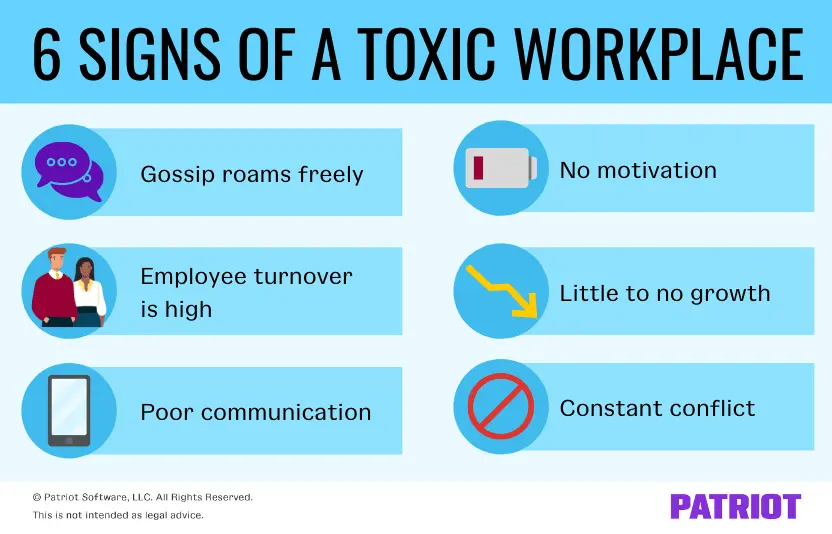Toxic No More: How to Reclaim Positive Workplace Culture
- Sonya Grattan
- Mar 26
- 4 min read
Updated: May 5
The culture of a workplace can define an employee's experience. Many have heard horror stories about toxic cultures that breed fear and resentment instead of fostering collaboration and positivity. So, what happens when a company decides enough is enough? Let’s explore real examples of toxic workplace cultures and how they were transformed into supportive environments.

The Origins of Toxic Workplace Culture
Toxic workplace culture typically emerges from factors like ineffective management practices, unresolved conflicts, and poor communication. It can show up as bullying, discrimination, or favouritism among co-workers.
Take, for instance, a tech start-up that was notorious for its high turnover rates—around 30% annually. Employees frequently complained about micromanagement from the top, leading to feelings of disengagement and stress. This directly affected creativity; innovative projects were stalled, and collaboration felt impossible.
However, this was just the beginning of their journey. Recognising the seriousness of the situation, the leadership team knew they had to change. They simply could not afford to lose talented staff any longer.
Recognising the Signs
To fix a toxic culture, the first step is acknowledging its signs. Common indicators include employees becoming disengaged, withholding ideas, or speaking negatively about each other. In that tech startup, management realised employee burnout was rising, resulting in a staggering increase of 40% in sick days.
To address this, the leadership team implemented anonymous surveys. These allowed employees to voice their thoughts honestly, shedding light on the true state of workplace morale and highlighting areas needing immediate attention.
Making Changes: Initial Steps
Once management grasped the issues, they took effective action. First, they established clear communication channels. Town hall meetings were held, allowing employees to voice their concerns directly to upper management. This initiative empowered team members to provide feedback without fear of reprisal, creating a more inclusive atmosphere.
In addition, they enforced a zero-tolerance policy against discrimination and bullying. By clearly defining unacceptable behaviours, the office culture began to improve. Leaders made it a priority to model the values they wanted to instil—respect, honesty, and teamwork.
Learning from Real-Life Examples
One compelling case is that of a well-known corporation with a long-standing reputation for a damaging workplace culture. Employees reported favouritism, relentless competition, and an unhealthy work-life balance. With morale low and turnover rates exceeding 25%, the costs of hiring and training new staff were piling up.
To counter this, the company invested in training programs focused on emotional intelligence and effective management strategies. Leaders learned how to foster a supportive atmosphere instead of a cutthroat environment. As a result, employees began to view each other as teammates rather than adversaries.
Taking Action: Implementing New Policies
The next step involved introducing policies that emphasised work-life balance. Flexible work hours and remote work options were made available, enabling employees to manage their schedules better. Although the transformation took time and persistence, managers regularly checked in with their teams to ensure these policies were effective.
Moreover, engaging activities that promoted team bonding were organised. These were not just obligatory outings, but enjoyable experiences that strengthened relationships among employees. Gradually, workers began to look forward to the workplace—not just for a salary, but for the friendships and shared enthusiasm.
Empowering Employee Voices
A key element of any cultural shift is giving employees a role in creating solutions. Once the changes were implemented, that tech startup actively sought feedback and established Employee Resource Groups. These groups allowed workers to share their ideas and experiences, reinforcing a sense of inclusivity.
This collaborative atmosphere led to innovative suggestions on improving the workplace further. Employees felt heard and developed greater relationships with one another, fostering a spirit of community that had previously been absent.
Measuring Success
With meaningful changes in place, the next step was to measure success. Leadership followed up with surveys to evaluate employee satisfaction and engagement levels. The results were encouraging—there was a noticeable improvement in morale and productivity, with reports of renewed belonging among team members.
What was once a toxic environment transformed into a space where creativity thrived, and individuals felt safe expressing themselves. This journey demonstrated that with dedication and action, a harmful culture can indeed be reversed.
Looking Forward: The Road Ahead
Transforming a toxic workplace is a significant challenge. It demands courage, commitment, and a genuine willingness to change. Organisations need to remember that every employee plays a vital role in shaping the workplace culture. By promoting open communication, respect, and inclusivity, businesses can create environments where employees feel valued and empowered.
These stories, especially from that tech startup and the corporate giant, highlight invaluable lessons about the importance of culture. They remind us that when we confront toxicity directly, real transformations are achievable. Let’s continue prioritising positive workplace cultures and work towards a brighter future. After all, we spend a significant portion of our lives at work.
In the end, can you believe what happened at work? If it worked there, it can work anywhere. The journey toward healthier workplace culture may be tough, but it is undoubtedly worthwhile.



Comments